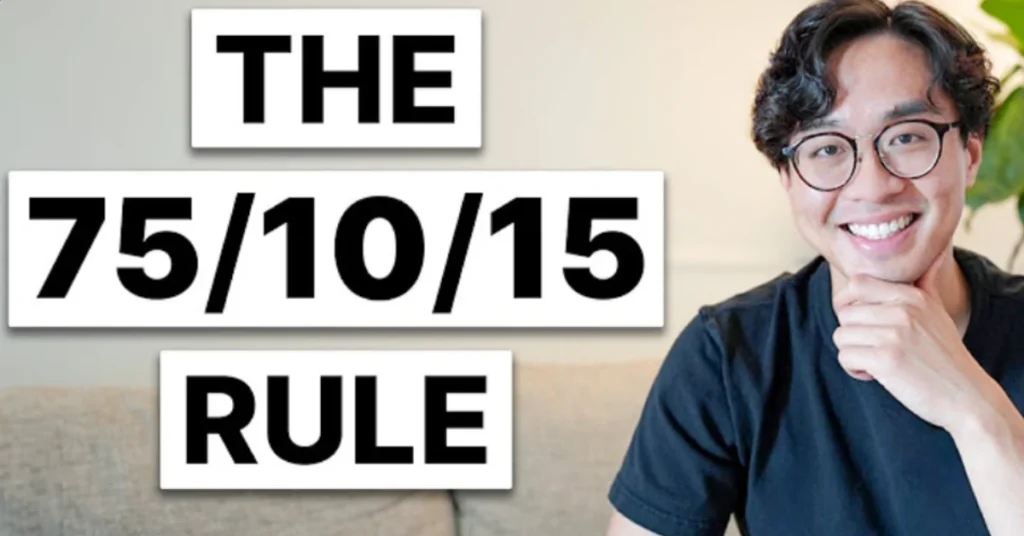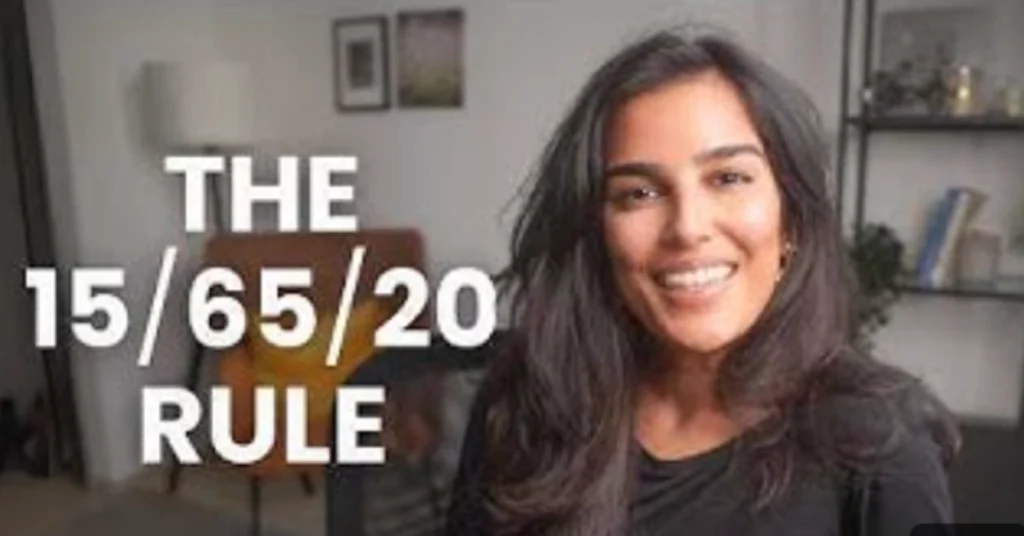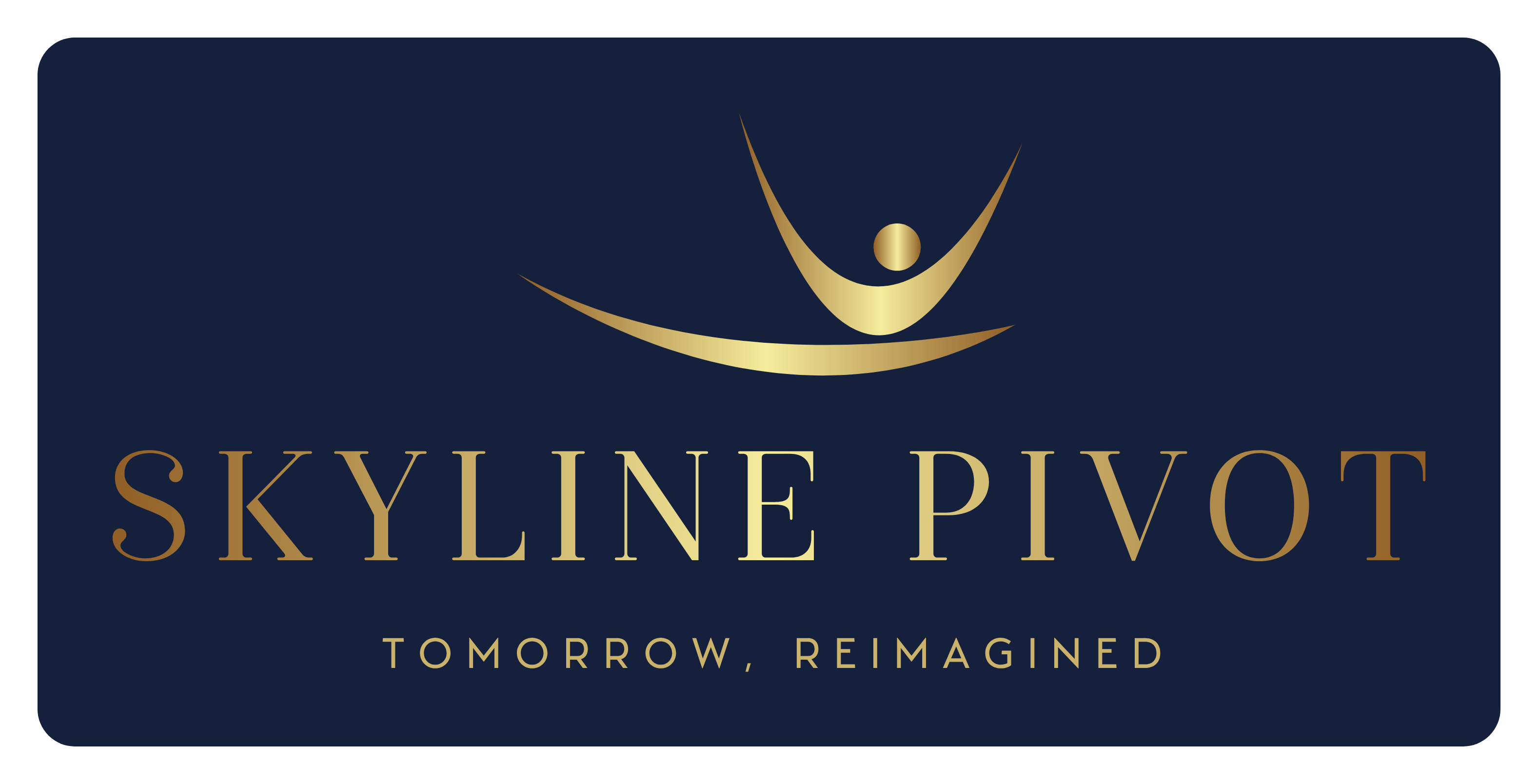Are you wondering how to manage money like the 1%?
Let’s talk about why their financial strategies aren’t as unattainable as they seem.
Imagine this: You’re making a decent living, yet every month feels like a game of catch-up. Bills pile up, savings feel nonexistent, and investing? That seems like a luxury for the rich and famous.
Reality is: It’s not about how much you make—it’s about how you manage it.
The wealthy—yes, the elusive 1%—have their methods. They don’t spend recklessly, nor do they hoard every penny. Instead, they follow simple, actionable systems that ensure their money works for them.
The best part? You don’t need a million-dollar paycheck to start.
This isn’t just another budgeting lesson. It’s a guide tailored for you, right where you are, with the tools to build wealth like the pros. Let’s dive in.

Mastering the 75/10/15 Rule: How to Manage Money Like the 1%
You’ve probably heard whispers about this system, but what exactly is the 75/10/15 rule? And, how does it help you manage money like the 1%?
The 75/10/15 rule is mentioned everywhere as the method for managing money like the wealthy. But here’s what no one tells you—it’s not about rigid percentages; it’s about creating a flexible, scalable structure that adapts to your financial reality. Here’s a breakdown.
- 75% for Living Expenses: This is your maximum. Housing, food, transportation—all the essentials fit here. But don’t mistake this for a spending target. If you can live on 60%, that’s 15% more you can funnel into your future.
- 10% for Savings: Think of this as your cushion fund. Start small—$1,000 to cover emergencies like car repairs or medical bills. Build it to 3-6 months of expenses. Then? Shift that 10% into investments.
- 15% for Investments: This is where the magic happens. This portion isn’t just for retirement—it’s for wealth-building. High-yield savings accounts, index funds, ETFs—your money starts to work harder than you do.
Why It Works?
The 75/10/15 rule isn’t a one-size-fits-all solution. It’s a starting point. Whether you make $40,000 or $400,000, these percentages grow with you, giving you a clear roadmap to escape the paycheck-to-paycheck grind.
Debt or Investments: Which Should You Tackle First?
How to manage money like the 1%?
When it comes to managing money, the question of whether to focus on paying off debt or investing for the future often stirs debate. Both the Baby Steps method and the 75/10/15 rule offer valuable insights—but which one aligns with your financial goals? That’s the question.
This section explores the strengths and limitations of each approach, providing clarity on how to build a strategy that evolves with your journey. Let’s break it down.
What’s the Difference Between the Baby Steps Method and the 75/10/15 Rule?
The Baby Steps method is widely known for its structured approach to tackling financial burdens like debt and lack of savings by implementing 7 actionable steps. It emphasizes setting priorities over percentages, making it a popular choice for those starting from a challenging financial position.
What are the 7 Baby Steps in action?
- Save $1,000 for emergencies.
- Pay off all debt (except your mortgage).
- Build a 3-6 month emergency fund.
- Invest 15% of your household income into retirement.
- Start saving for kid’s college.
- Pay off your house.
- Nothing to do now but become wealthy and outrageously generous.
While effective for addressing immediate financial issues, the Baby Steps method has one notable limitation: its rigidity. It works best for those focused solely on eliminating debt but can feel restrictive for individuals ready to move toward wealth-building.
The 75/10/15 rule, by contrast, provides a flexible framework designed to grow with you. It balances living expenses, savings, and investments, ensuring you’re not just eliminating debt but also building a future.
Quick Comparison:
- Baby Steps: Structured and ideal for tackling debt.
- 75/10/15 Rule: Flexible and focused on wealth-building.
So, when should you transition from paying off debt to investing?
Here’s a Suggestion:
Use the Baby Steps to handle pressing financial challenges. Once you’ve tackled debt and established a solid emergency fund, transition into the 75/10/15 rule to create a disciplined yet adaptable wealth-building system. By combining the best of both methods, you can move from surviving to thriving—no matter where you start. Whether you’re paying off debt or building wealth, having a plan ensures you’re managing your money even if you haven’t cracked into the 1% yet.

The 15/65/20 System – A Balanced Approach
Let’s be real: managing money shouldn’t feel like a punishment. You’re working hard—putting in long hours, juggling responsibilities—and you deserve to enjoy the fruits of your labor. If you’re like me, you might feel that sticking to a rigid system without some rewards along the way is a recipe for failure. I get it. That’s why the 15/65/20 system is a game-changer. It’s practical, it’s flexible, and it makes room for life to happen.
How do you balance savings, essentials, and enjoyment with the 15/65/20 system?
- 15% for Savings and Investments: Start here to secure your future. Build your emergency fund first—enough to cover 3-6 months of core expenses. Once that’s in place, shift your focus to investments like high-yield savings accounts, index funds, or ETFs. The earlier you start, the more you’ll benefit from the magic of compound interest.
- 65% for Essentials: This is the foundation of your budget. Cover your core expenses—housing, utilities, transportation—with this portion of your income. Think of it as your baseline, keeping your day-to-day life running while avoiding lifestyle inflation.
- 20% for Guilt-Free Spending: Here’s the fun part. This is for treating yourself without guilt—whether it’s dining out, hobbies, vacations, or that gadget you’ve been eyeing. Studies show that allowing room for enjoyment helps people stick to their financial plans long-term. After all, what’s the point of financial freedom if you’re not enjoying the journey?
Why Does the 15/65/20 System Work?
The beauty of the 15/65/20 system is balance. It’s not about rigid numbers; it’s about creating a framework that fits your life. Mastering how to manage money like the 1% shouldn’t damper your vitality. You’re covering your essentials, building a solid financial future, and making room for joy—all while keeping your money working for you. That’s the goal.
By organizing your finances into these three buckets, you can stay consistent without feeling deprived or overwhelmed. It’s a system designed to adapt to your lifestyle while ensuring long-term financial health and happiness.
Asset Investment: Building Wealth Like the 1%
And still, how to manage money like the 1%?
…because saving alone won’t make you wealthy. The secret? Assets—and the streams of income they create.
The 75/10/15 rule shines here with its 15% allocation to investments. But it’s not just about saving or setting money aside; it’s about building an engine that powers your wealth. Assets generate passive income, create opportunities for reinvestment, and—when paired with a business or other income streams—set the foundation for financial freedom. This isn’t a shortcut; it’s a system.
Why Assets and Income Streams Matter:
Compound Interest: The earlier you start, the more dramatic your growth. Compound interest accelerates your wealth by allowing your money to earn on itself.
Tax Benefits: Leveraging tax-advantaged accounts like Roth IRAs and 401(k)s allows your investments to grow tax-free or tax-deferred. Owning a business can further offset taxes, giving you more to invest back into income-generating opportunities.
Passive Growth: Index funds and ETFs diversify your investments across hundreds of companies, minimizing risk while maximizing returns.
Multiple Streams of Income: To truly unlock the power of asset investment, you must create multiple streams of income. Whether it’s dividends from stocks, rental income from real estate, or revenue from a side hustle or business, these streams feed back into your wealth-building system. This snowball effect—where money makes more money—is the backbone of wealth creation.

The Hybrid System:
Now that you’ve seen the best of all methods, let’s refine the approach to ensure your income doesn’t just work—it grows:
How to Manage Money Like the 1% Blueprint:
- Build a Quick Emergency Fund:
Save $1,000 fast. Cut subscriptions, sell unused items, or pick up a temporary side hustle. This is your safety net. - Tackle Debt Aggressively:
Pay off all debt except your mortgage. Every extra dollar goes here until you’re free. - Transition to the 75/10/15 Rule:
- 75%: Cover essentials but aim to spend less.
- 10%: Funnel into investments once your emergency fund is 3-6 months strong.
- 15%: Invest consistently in tax-advantaged accounts and index funds.
- Adjust for Joy (15/65/20 Integration):
Once your foundation is solid, carve out 20% for guilt-free spending. Life’s too short not to enjoy the fruits of your labor. - Grow Your Assets and Streams of Income:
Wealth isn’t just about what you own; it’s about how your assets work for you. Start a business or acquire real estate to generate passive income. Use the returns from one stream to fund another. This cycle of reinvestment builds true financial independence.
Your Wealth, Your Move
Wealth isn’t about hitting the jackpot or chasing the next big thing. It’s about discipline, strategy, and creating opportunities for your money to grow. Assets, multiple streams of income, and smart reinvestments are your tools.
You’ve just unlocked the playbook. That’s how to manage money like the 1%. People say the 1% don’t want you to know. Well, now you do. Now it’s time to put it into action.
Start by participating in Money Talks. Get familiar with our Financial Toolkit, packed with budgeting templates, investment guides, and the exact steps you need to start managing your money like the wealthy. This isn’t just about numbers—it’s about creating a life of freedom, security, and joy. And that, my friend, is how to manage money like the 1%.
Tailored to Readers with Bad Credit
Starting with bad credit? No worries—we’ve got your back. Take the first step toward financial freedom with our free DIY credit repair tool, Credit Elevated. It’s designed to help you fix your credit without adding more debt. Rebuild your financial foundation today.
How to manage money like the 1%!


Leave a Reply